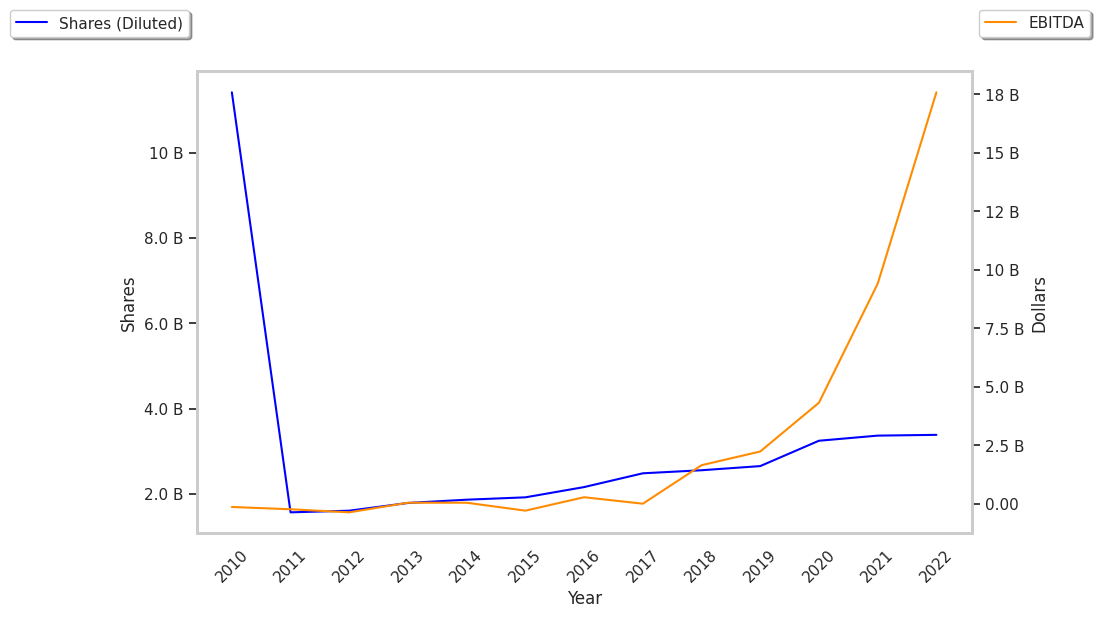Tesla's price surge today will have many doubting analyst views on the stock. Ending the day at $196.21, TSLA has posted 4.7% gains, meaning that many investors are willing to buy the stock despite its average rating of hold. What factors might be motivating these buyers?
Let's start our value analysis with the price to book (P/B) ratio. This is perhaps the most basic measure of a company's valuation, which is its market value divided by its book value. Book value refers to the sum of all of the company's tangible assets minus its liabilities -- you can also think of it as the company's equity value.
Traditionally, value investors would look for companies with a ratio of less than 1 (meaning that the market value was smaller than the company's book value), but such opportunities are very rare these days. So we tend to look for company's whose valuations are less than their sector and market average. The P/B ratio for Tesla is 9.72, compared to its sector average of 3.18 and the S&P500's average P/B of 4.59.
The most common metric for valuing a company is its Price to Earnings (P/E) ratio. It's simply today's stock price of 196.21 divided by either its trailing or forward earnings, which for Tesla are $3.92 and $3.39 respectively. Based on these values, the company's trailing P/E ratio is 50.1 and its forward P/E ratio is 57.9. By way of comparison, the average P/E ratio of the Consumer Discretionary sector is 22.06 and the average P/E ratio of the S&P 500 is 27.65.
The problem with P/E ratios is that they don't take into account the growth of earnings. This means that a company with a higher than average P/E ratio may still be undervalued if it has extremely high projected earnings growth. Conversely, a company with a low P/E ratio may not present a good value if its projected earnings are stagnant.
When we divide Tesla's P/E ratio by its projected 5 year earnings growth rate, we obtain its Price to Earnings Growth (PEG) ratio of 4.8. A PEG ratio of 1 or less may indicate the company is undervalued in terms of its growth potential. On the other hand, a PEG ratio higher than 1 could indicate that investors are paying too high a premium for these growth levels. Bear in mind, however, that the 5 year earnings growth estimate could very well be an over or underestimate!
Indebted or mismanaged companies can't sustain shareholder value for long, even if they have strong earnings. For this reason, considering Tesla's ability to meet its debt obligations is an important aspect of its valuation. By adding up its current assets, then subtracting its inventory and prepaid expenses, and then dividing the whole by its current liabilities, we obtain the company's Quick Ratio of 1.05. Since TSLA's quick ratio is higher than 1, its total liquid assets are sufficient to meets its current liabilities.
When we had up all the inflows and outflows of cash, including payments to creditors, we obtain Tesla's levered free cash flow of $4.36 Billion. This represents the money left over from the company's operations that is available for reinvestment in the business, or for paying out to equity investors in the form of a dividend. Despite its positive cash flows, Tesla does not currently pay a dividend.
In conclusion, Tesla may hold more intrinsic value than analysts give it credit for. If analysts are unenthused about the stock despite its attractive valuation, it is likely due to their perception of limited growth potential, as evidenced by its elevated PEG ratio. We will keep following TSLA to see whether the value or growth thesis prevails.



